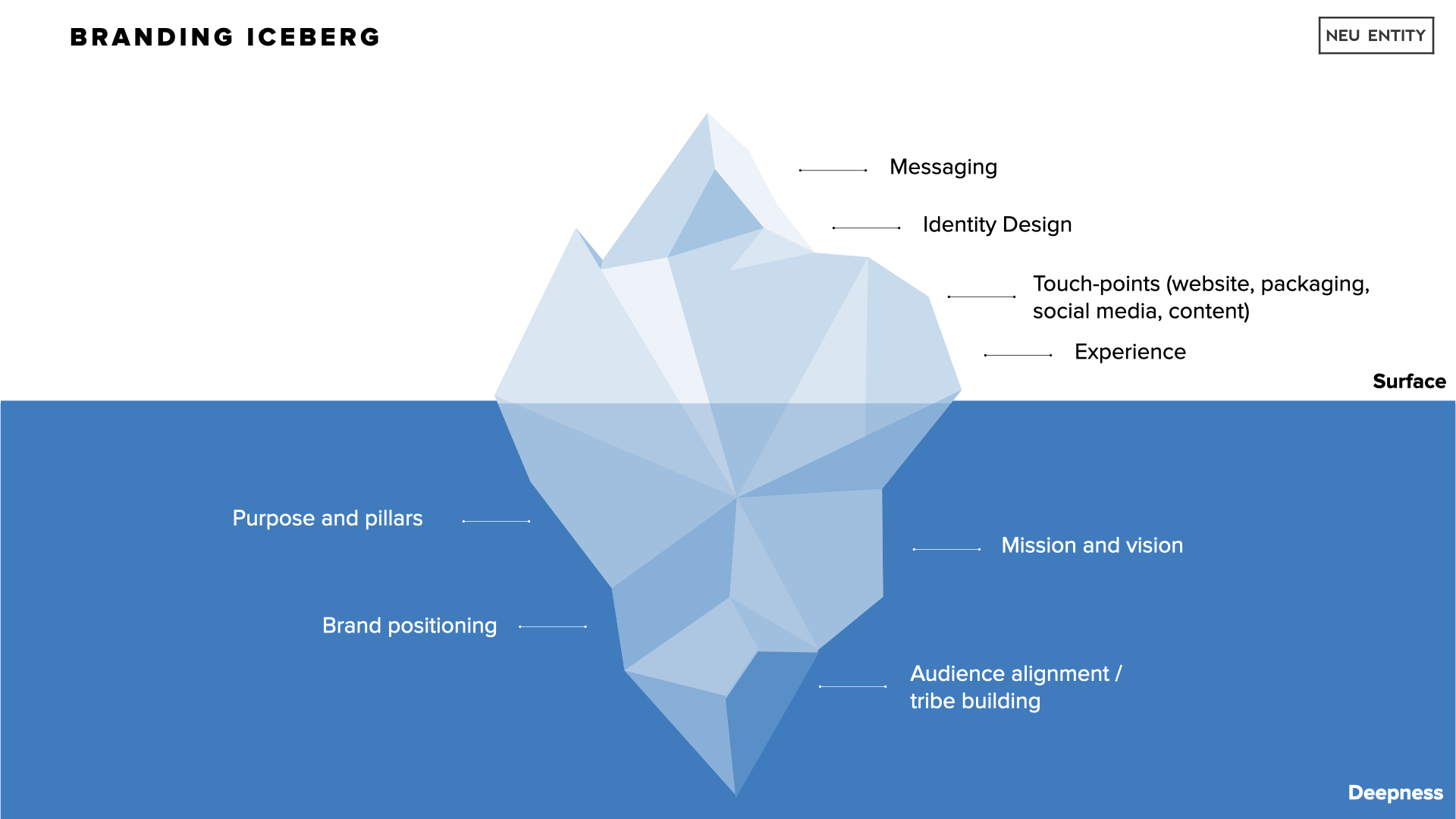What Exactly Is Branding?
First and foremost, before we talk about branding let us understand what a brand actually is.
A brand is defined by brand master Marty Neumeier as the gut feel you have towards a company, organisation, product or person. Many other experts interpret the word as a form of reputation, perception or instinct.

It is the feeling you have when you go for a particular soda among the others sitting on the shelf. It’s the reason you make a purchase without completely going deep into the nitty gritty details of the feature functions. And even when you do fully comprehend the features, the brand is that thing that pushes you to conviction on your purchase.
Therefore branding is the work that is involved in building the brand. Make no mistake that brand building is a process, never a one time thing. The work of branding covers many areas in the business or organisation, and is not limited to just what the market sees of that entity.
Good branding is when you have sorted out the process and are doing everything you can to build the brand. Bad branding could mean bad processes, being unorganised, having misalignment and generally having that messy, ‘all over the place’ feel about the brand.
What Happens When You Don’t Have Good Branding?
Without good branding, you stand a very real risk of becoming obsolete. In this current age of information, where ideas and influence can spread like wildfire at blazing speeds, becoming obsolete can literally happen overnight, or within a very short period of time. Look at how Uber was able to render the premium and complacent black limo service.
With bad branding, your audience will not ‘get you’. Your message, ideas or value may be lost to them, and they will more likely follow your competitors. What’s worse is that they might follow thought leaders from outside their sphere of relevance. This leads to confusion and may even be dangerous.
The fact that you understand context and are localised does not mean you automatically become the thought leader or choice of your target audience. You need to brand yourself and spread your influence or lose their attention.
Externally, bad branding affects brand awareness negatively. The perception your audience has of you will not be aligned to what you would expect from them. This leads to a poor connection to your audience. Ultimately your revenue will be severely affected.
Internally you might lose stakeholders. Bad branding might cause you the inability to keep your team motivated, empowered and invested. Why? Because branding starts from within. Alignment is key in keeping the stakeholders and team together. People in your business represent your business.
Is Branding for Everyone?
The answer is… YES. But the reality is that not everyone will find it to be useful or important enough to be paid attention to or budgeted for. And here’s the thing… that’s a good thing, for you.
For many businesses who devalue branding, they would either have no serious competitors or perhaps they’ve established themselves over several lifetimes of service. They are confident that no one can take their market.
Why this is good for the rest of us is because of the ‘rabbit and tortoise story’ — where the moral of the story was, complacency kills.
Pandemics, unicorns (businesses that rise and change business landscapes), wars, tech revolutions… these external market forces will act like tsunamis, wiping out anything in its path. But businesses with good brands stand a fighting chance to remain relevant if they execute strategically.
What’s Involved in Branding?
Imagine an iceberg. What we see at the top is a small part of it, and the immovability and strength of the iceberg lies in what you don’t see, underwater.
Above water are things that people see, consume and interact with your brand.

For example, things like brand messaging, your identity design (which includes logos, colours etc), brand touchpoints (e.g. website, packaging, social, content) as well as experience.
Underwater, you have things like the brand’s purpose and pillars. The mission and vision (even though people plaster them on the walls) are something that should be internalised and practiced. Brand positioning is crucial as well so you know where you stand and where you play, to get the most out of the market. Audience alignment and tribe building is extremely important today.
Basically, what you don’t see, and what gives the iceberg unshakeable strength, are things found in brand strategy. Check on Why Brand Strategy is Important.
Conclusion
As I mentioned, not everyone will find branding to be important, And that is based off a risk assessment that they have undertaken.
Building a brand takes a lot of effort and cost, and as entrepreneurs, you want to be as strategic as possible with your resource.
When things are status quo, and going fine, there won’t be any problems. But should the wave hit us… those that have great brands, survive. Let have a talk to discuss about your branding with our team.
